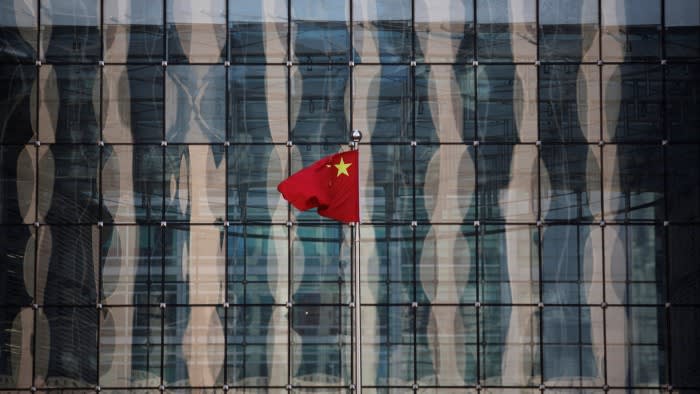Stay informed with free updates
Simply sign up to the Chinese economy myFT Digest — delivered directly to your inbox.
Officials from some of China’s most indebted provinces and cities have met leading state bankers in Beijing in recent days as they step up efforts to renegotiate debt payments on billions of dollars in liabilities that threaten to constrain growth in the world’s second-biggest economy.
China’s local governments accumulated enormous liabilities over a decade-long, debt-fuelled building spree. While the infrastructure drive helped fuel growth, many local governments are now grappling with billions of dollars of off-balance sheet debt, stifling their ability to deploy new investments and adding to pressure on the economy as it struggles to regain its footing after the pandemic.
On the sidelines of an annual political gathering in Beijing known as the “Two Sessions”, officials from Liaoning and Hebei provinces and the city of Tianjin have engaged in extensive high-level debt discussions with leading state bankers, according to two people familiar with the talks and public statements from the banks.
“They are all here to attend the Two Sessions and pay visits to financial regulatory agencies and banking institutions in passing,” one banker familiar with the meeting between Liaoning and state institutions said.
“But the fact that they sat down for such discussion speaks to the great importance they attach to the issue of local debt reduction and what kind of financial resources they can still access at this stage.”
Officials from Liaoning, a northern rust-belt province, met top bankers on Saturday from 18 state financial institutions, including Industrial and Commercial Bank of China, the country’s largest lender, according to an official statement.
Senior officials from Hebei province and the coastal city of Tianjin conducted high-level meetings with state lenders including Bank of China, according to people familiar with the situation.
Officials from Hebei and Tianjin were seeking to restructure outstanding off-balance sheet debt, the people said, while those from Liaoning hoped to refinance some debt using local state assets as security. Prior to meeting the banks, the local officials also lobbied state regulators for their blessing to approach the banks, the people said.
The “stress [of off-balance sheet debt] would push financially weak provinces to actively negotiate those forms of debt”, said Ivan Chung, managing director at Moody’s Investors Service.
The Liaoning, Hebei and Tianjin governments did not respond to requests for comment. The banks declined to comment beyond their public statements.
China’s local governments have amassed up to Rmb94tn ($13tn) in debt, according to an estimate from Goldman Sachs, which includes liabilities from off-balance sheet entities known as local government financing vehicles — investment companies that raise debt and build infrastructure on behalf of authorities. A total of Rmb3.2tn of public bonds needs to be repaid by the end of 2024, according to Moody’s.
China’s State Council, or cabinet, last year sent teams of officials to more than 10 of the financially weakest provinces and cities — including Liaoning and Tianjin — to examine their books.
Beijing has also stepped in with support, arranging more than Rmb1.4tn in special refinancing bonds to help local governments repay outstanding bonds upon maturity.
These top-down efforts have averted public defaults, but analysts said much remained to be done to resolve hidden debts that do not appear on local governments’ balance sheets.
“The immediate threat of bond defaults has been mitigated,” said Chung of Moody’s. “Focus has now shifted towards tackling mid- to long-term debt of LGFVs, which, while less likely to cause spillover effects, requires more time to manage effectively.”
In this year’s budget report, China’s central government vowed to “firmly prevent any increase in hidden government debt and steadily address existing hidden debts”. Lan Fo’an, China’s finance minister, said on Wednesday that Beijing would “gradually reduce risks” of local government debt by cutting the number of LGFVs and pushing local governments to sell stranded assets, while offering some fiscal support.
In south-western Yunnan, 1,153 government-funded infrastructure projects such as highways and theme parks have been suspended and new construction halted to limit expenditures and focus on debt resolution, according to a document seen by the Financial Times.
The Yunnan provincial government did not respond to a request for comment.
Financial regulators have also put pressure on banks, especially state-owned lenders, to explore restructuring local government debt. Despite facing a probable profit hit, banks know that they face a political imperative to prioritise debt resolution.
“You probably won’t see the stress on [banks’] balance sheets straight away, but the debt resolution work is putting real pressure on banks this year,” said one banker present at one of the meetings.
“The prevailing strategy is aimed at deferring immediate risks by trading time for breathing space.”


